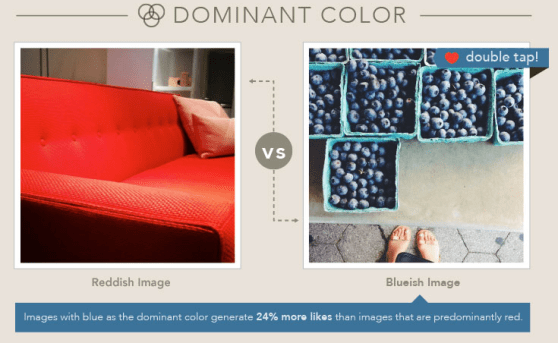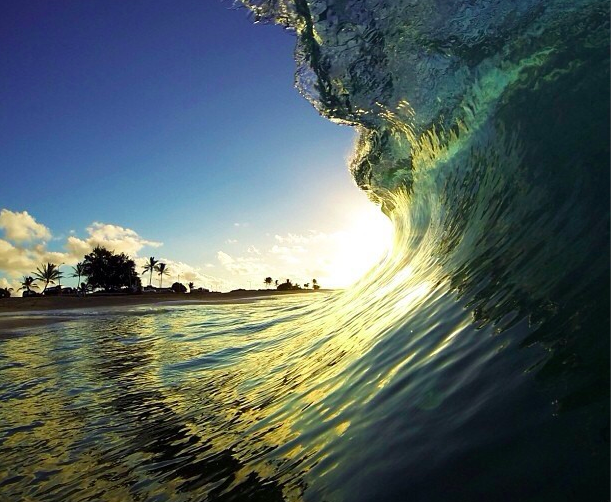If you’re trying to produce likable, shareable Instagram images, you’d better share blueish images with a lot of background, texture, and light. And stay away from red.
“Likes on Instagram, while incredibly valuable, are hard to come by, with 65 percent of Instagram images garnering between zero and ten likes,” said Apu Gupta, CEO of Curalate, which provides social analytics for visual media on Instagram, Pinterest, and Facebook. “By making a few small tweaks, brands looking to connect with consumers on visual sites like Instagram can see their engagement skyrocket, resulting in increased customer loyalty and, more importantly, sales.”
 With 150 million users sharing 16 billion photos and liking a billion of them every single day, Instagram is getting to be a more and more crowded platform. As such, if you want to stand out, it’s getting harder and harder.
With 150 million users sharing 16 billion photos and liking a billion of them every single day, Instagram is getting to be a more and more crowded platform. As such, if you want to stand out, it’s getting harder and harder.
After analyzing over eight million images, Curulate found the common elements of shareable, likable Instagram images.
Blues are best, and even if you don’t choose blue, a single dominant color is much better than multiple colors. Images with blue as the dominant color generate 24 percent more likes than reddish images, Gupta said, and images that have a single dominant color generate 40 percent more likes than those with multiple competing colors. Currently, however, only 10 percent of images on Pinterest are dominantly one color.
Even more important, however, is a lot of background space. Images with more than 90 percent background are “very successful,” but most Instagram images have less than 20 percent background, giving the eye no place to rest.
 Interestingly, all those characteristics are very different from another key visual sharing medium, Pinterest. On Pinterest, the perfect pin is a closeup in red and orange. That’s probably due to the fact that we’re viewing these images on small, hand-held devices, Gupta said, rather than large laptop screens.
Interestingly, all those characteristics are very different from another key visual sharing medium, Pinterest. On Pinterest, the perfect pin is a closeup in red and orange. That’s probably due to the fact that we’re viewing these images on small, hand-held devices, Gupta said, rather than large laptop screens.
“I think device format does have something to do with this,” he told me. “When you’re viewing an image just mere inches from your face, the absence of chaos can help you focus.”
In addition, low saturation is better — yes, Instagram really does like that almost stereotypical faux art black-and-white look — but dark images with little light are the least successful images, winning far fewer likes than light images. And texture, or variance of the intensity of gradients in the images, helps images get liked 78 percent more frequently than images that are smooth, with few gradients.
Sharing shareable images is important for brands that want to connect with customers.
“For brands, likes don’t just represent engagement, they represent permission,” Gupta says. “Consumers who are liking an image that a brand produces are, in essence, inviting the brand into their life and acknowledging the brand’s creativity. Ultimately, this helps to create a more emotional connection. In effect, you’re now in a screen along with my best friends.”
Having a top-performing Instagram account helps brands build a community around their products and the company, Gupta told me, as well as becoming more “human.”
“For instance, Urban Outfitters has successfully taken the Instagram hashtag “UOonYou” (Urban Outfitters on You) and used it as a way to encourage people to take selfies wearing UO clothing. They’ve brought these images to their website as a means to celebrate the fans that are celebrating the brand. At a time when most brands are still thinking about influencers, Urban is showing brands that it’s loyalists that really should be highlighted,” he said.
That’s unscripted and authentic, both important characteristics especially to younger consumers today.
VentureBeat's mission is to be a digital town square for technical decision-makers to gain knowledge about transformative enterprise technology and transact. Learn More

